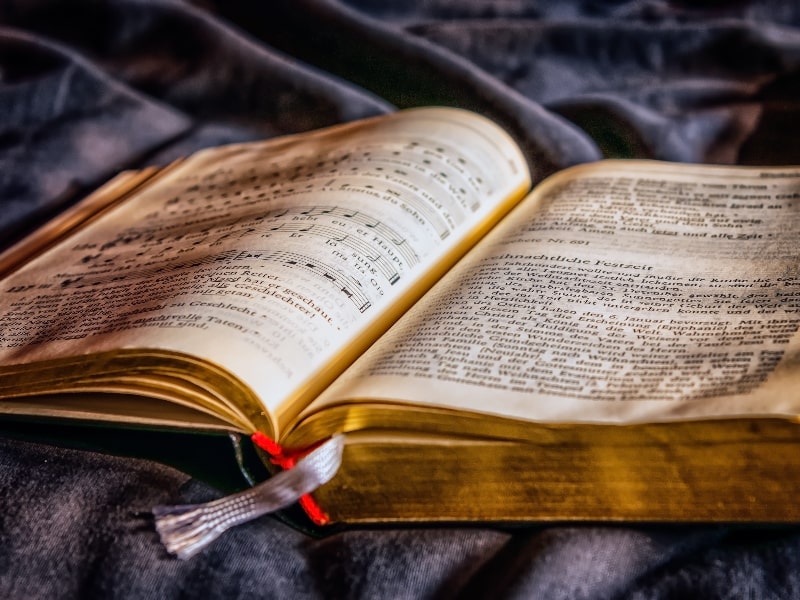Persian literature: what it is, its history and literary development, characteristics and works
Contents
What is Persian literature?
Persian literature is developed in the far regions of Central Asia, covering a cultural period that lasted about 2500 years, however, a large part of the pre-Islamic documents have already been lost. Referred to as such, it refers to the body of literary works or productions that developed in Old Persian also known as Achaemenid Persian, a southwestern Iranian language that spread throughout ancient Iran.
Many scholars claim that works written in other languages, such as Greek or Arabic, but with Persian ethnicity are also referred to as Persian literature. Thus, it is considered that the greatest stage of strengthening in terms of production of this literature, was at the time after the Islamic conquest of Persia, which is around the year 650.
History and origin of Persian literature
Persian literature can be studied historically from three key moments, these are:
Pre-Islamic literature: refers to the first moment of development of Persian literature, known as what was “Old Persia”. Of this moment very few works are known and these would be royal inscriptions that belonged to the kings of the VI and V centuries B.C. Also appear the Zoroastrian writings, which would be destroyed in the conquest of Persia by Islam, however, some of them would have been taken to India.
Medieval and pre-modern Persian literature: even with the social conditions that were being lived at the time, with the Arab conquest, which brought as a consequence the Islamization of the culture, moment that took place during the caliphates of Omeya and the beginnings of the Abbasid, Persian was able to continue the literary development. This is due to the strong feeling of pre-Islamic nationalism, which succeeded in inducing writers of the generation of Unsure, Ferdowsi, Rudaki and Daqiqi to continue literary creation and rescue the culture of ancient Persia.
Modern Persian literature: by this time, at the beginning of the 19th century, important changes began to take place. At first, an abysmal change takes place in Persian literature, which must adjust to the progress and modernization of society as a result of the need for political origin that brought the government of the time. This led to the development of an established orientation to literature, to which literary critics argued that one of the bases of literary expression corresponded punctually to become the reflection of the reality of a country, which in this case, was experiencing that transition.
Accordingly, Persian literature begins to incorporate a new rhetoric and structure to meet this need.
Persian literature began to be known in the West in the 19th century, after a series of translations of works written by Persian poets who developed their works during the medieval period began to be published. This process was key to the development of world literature, since other authors emerged from it and followed their structures in the West, serving as inspiration for literary creation.

Development of Persian literature
On the other hand, it should be considered that Persian literature was extended and developed by several cultures and traditions, among them we find the Sufis, who were key to its development, because from there emerged some of the most important poets of medieval times with an enriched poetry that extends throughout the Islamic world. Likewise, they highlighted their styles and themes, which would later be imitated by other poets and writers who would take them as a reference.
Among the main fields of development we find the following genres:
Persian poetry
It is one of the most common genres in Persian literature, and it is even possible to find this genre in a large part of the developed literature, because in fact, writing in verse will become a requirement for any scholar of the time, so it is possible to find works of science that also follow this structure. Likewise, important styles were developed that were distinguished by tone, diction and the language implemented.
Essay
Important names in Persian literature flourish in this subgenre, among which we find Nizami Aruzi Samarqandi, as well as works such as the compendium of anecdotes that were written by Jawani ul-Hikayat, among others.
Biography
Within this field are also included works of historical character that were catalogued in this field, such as the Tarij-Bayhaqi, considered as one of the most important works of research.
Narrative
Persian literature also worked in other fields such as narrative, developing fundamental works for universal literature such as the work “The Thousand and One Nights”, one of the representative works of the Middle Ages.
Characteristics of Persian literature
In order to know in depth this literary manifestation, let us review the following aspects:
Variety of formats: one of the most important characteristics of Persian literature was that it developed in several formats or genres that today are of great importance in terms of literary organization, among which narrative, poetry, biography and historical content, and dictionaries stand out.
Importance of verse: for Persian literature, verse is of vital importance in practically any written production, for as we mentioned, in fact, it becomes a requirement for the writer. That is why we will see the structure of verse in various formats and other topics of writing such as science and metaphysics.
Recent production: it is considered that the Persian literature that develops and extends to modernity, is actually a continuation of what was worked during the Middle Persian, which adds a series of socio-political conditions of the area and reaches its peak around the ninth century.
Religious importance: another aspect to be considered when reviewing Persian literature is that it has a high content of Zoroastrianism. That is to say, its main texts are based on the name of the person who founded the religious and philosophical current that came from Mazdeism.
Implementation of the arts: although the Persian literature manages to develop important advances of the hand of authors of this zone of the world, particularly the epic will count on the participation of other artistic manifestations as they will be the theatrical representations, to which many authors, also, added a story.

Persian literature yields Sufi literature with important texts written in prose such as treatises, among which are Kimiya-ye sa’adat, written by Abu Hamid Qasali, which would have important compilations of sayings from the maqalat of Shams of Tabriz and Abu Said Abi-I-Jeyr. We also find “The Thousand and One Nights”, as well as authors such as Hafiz, Saadi, who devoted himself to writing poetry in the medieval period with works such as “Bostan” or The Garden of Fruits, and “Gulistan” or The Garden of Roses, there is also Rumi, Jayyam, Ferdowsi who wrote: “The Book of Kings” or “The Epic of Kings”, among others.
